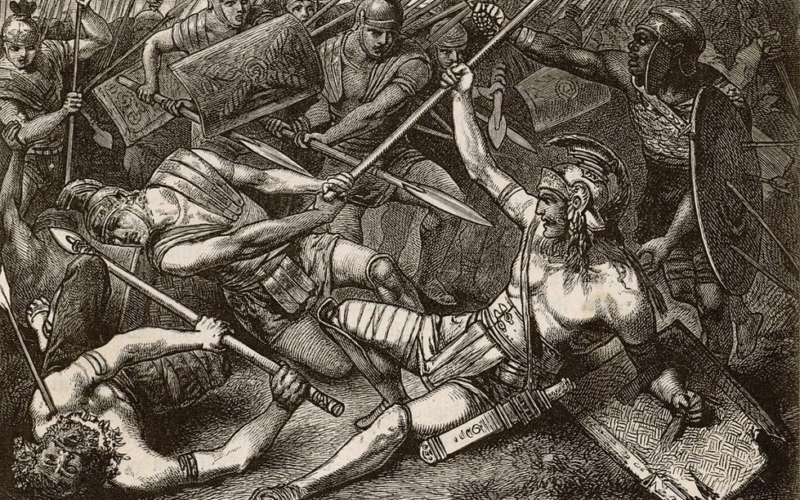Antonio Gramsci’s concept of “passive revolution” refers to a process of social, political, or economic change that is driven from above—by the ruling classes or the state—rather than through active and direct popular movements or revolutionary uprisings. Unlike traditional revolutions where the masses take control and overthrow the existing power structure, passive revolutions are characterized by gradual transformations that maintain the basic structure of power while incorporating some changes to accommodate new social or political realities.
Key features of Gramsci’s concept of passive revolution include:
- Top-down Reform: Changes are initiated by elites or the state to prevent revolutionary upheaval from below. These changes are often implemented to stabilize the system and absorb potential opposition.
- Transformism: Related to passive revolution is the concept of “transformism,” where leaders from subaltern (or lower) classes are co-opted into the ruling class to neutralize radical challenges. This tactic allows the ruling class to incorporate elements of popular demands without fundamentally altering the power structure.
- Conservative Modernization: The ruling elites might introduce reforms that modernize society or the economy, but in ways that ultimately consolidate or preserve their dominance. This modernization is not meant to empower the people but to strengthen the existing order.
- Preventing Hegemony from Below: In Gramsci’s theory, the ruling class implements passive revolution to prevent the emergence of a counter-hegemony—an alternative ideological framework—by the subaltern classes. By making some concessions, the ruling class avoids the possibility of a mass revolutionary uprising.
- Historical Examples: Gramsci used historical examples such as the Italian unification (Risorgimento) and the development of modern capitalist societies to illustrate passive revolution. In Italy, for instance, national unity was achieved through elite-driven processes rather than through a broad, popular movement. Similarly, many capitalist reforms were driven by elites to prevent radical upheaval.
In essence, passive revolution is a strategy of maintaining control through change, wherein the ruling class reshapes institutions, policies, or the economy in ways that absorb or deflect popular discontent without surrendering power. It contrasts with more direct, bottom-up revolutionary movements that seek to overturn the entire social and political system.
What are the examples of passive revolutions in recent history of the world?
In recent history, there have been several examples of “passive revolutions” where significant social, political, or economic changes were initiated from above, often by elites or the state, rather than through mass popular movements. Here are some examples:1. Economic Reforms in China (1978-present)
After Mao Zedong’s death, China underwent major economic reforms under Deng Xiaoping. The ruling Communist Party introduced market reforms to modernize and transform China’s economy, moving from strict state control toward a more market-driven system.These reforms were introduced from above, by the Communist leadership, without a popular movement calling for such changes. The government retained tight political control while implementing capitalist practices within the socialist framework. This can be seen as a passive revolution because it prevented potential instability and dissatisfaction from below by modernizing the economy without losing control of the political system.2.
Perestroika and Glasnost in the Soviet Union (1980s)In the 1980s, Mikhail Gorbachev initiated Perestroika (economic restructuring) and Glasnost (political openness) in an effort to revitalize the Soviet Union. These were reforms that attempted to liberalize the economy and increase political transparency, but the Communist Party remained in control.The process was led from the top to avoid unrest and maintain the socialist state, even though it eventually led to the collapse of the Soviet Union. This could be considered a passive revolution because it involved significant reforms aimed at adapting the system to avoid a larger, potentially revolutionary upheaval.3.
Neoliberal Reforms in Latin America (1980s-1990s)In the 1980s and 1990s, many Latin American countries implemented neoliberal economic reforms under pressure from international institutions like the International Monetary Fund (IMF) and World Bank. These reforms included privatization, deregulation, and reductions in social spending.Although these changes were often unpopular and led to significant social consequences, they were introduced by elites to modernize economies in response to financial crises. In some cases, these reforms helped avoid larger social upheavals, acting as a passive revolution by incorporating some changes that were necessary for survival while maintaining the overall political-economic order.4.
Post-Apartheid South Africa (1990s)The transition from apartheid to a democratic system in South Africa can be viewed through the lens of passive revolution. Although apartheid was brought down by a strong mass movement (led by the African National Congress and other organizations), the transition to democracy involved a negotiated settlement between the ruling white minority and the liberation movements.The settlement, which allowed for political freedom and enfranchisement for the Black majority, also preserved much of the economic power structure, with white elites retaining significant control of the economy. This could be seen as a passive revolution because, while significant political changes occurred, the economic transformation was gradual and did not completely overturn the status quo.5.
Post-Socialist Economic Transition in Eastern Europe (1990s)After the fall of the Soviet Union, many Eastern European countries transitioned from socialism to capitalism through a series of top-down reforms. These transitions involved privatization of state assets and the establishment of market economies.While the political systems in these countries changed from authoritarian socialism to democracy, much of the economic restructuring was controlled by elites. In many cases, the former communist elites became the new capitalist elites, maintaining their dominance through a process of transformation rather than revolution. This gradual, elite-driven transformation mirrors Gramsci’s idea of a passive revolution.6.
The Arab Monarchies’ Reforms (2010s)In response to the Arab Spring uprisings, several monarchies in the Middle East, such as Morocco, Jordan, and the Gulf states, introduced limited political and economic reforms. These changes were aimed at addressing popular demands without surrendering control of the state.In Morocco, for instance, King Mohammed VI introduced a new constitution in 2011, granting some political powers to the parliament while keeping key executive powers in the hands of the monarchy. This process represents a passive revolution, as it was intended to preempt a more radical, revolutionary change from below by introducing controlled reforms from above.7.
Saudi Arabia’s Vision 2030 (2016-present)Saudi Arabia’s Crown Prince Mohammed bin Salman introduced Vision 2030, a series of economic and social reforms aimed at diversifying the economy away from oil dependence and opening up certain aspects of Saudi society.While some of the reforms, such as allowing women to drive and opening up entertainment options, were socially significant, they were initiated and controlled by the state without mass popular demands. The monarchy remains firmly in power, and political dissent is tightly controlled. This can be seen as a passive revolution because the leadership is initiating these changes from the top to modernize society without fundamentally challenging the existing political order.8.
Rwandan Development Model (1994-present)After the genocide in 1994, Rwanda, under President Paul Kagame, embarked on a top-down process of modernization and economic development. The country implemented policies aimed at transforming its economy and society, but this process has been controlled by a highly centralized state with limited political freedom.The Rwandan government has maintained stability and growth through a model that integrates some aspects of neoliberal economic policies with strong state control. While the country has experienced significant changes, the process has been elite-driven, with little space for political dissent, reflecting characteristics of a passive revolution.These examples demonstrate how ruling elites or state actors can initiate changes to adapt to new realities while maintaining overall control, which aligns with Gramsci’s concept of
passive revolution. The goal in these cases is often to prevent a larger revolutionary threat or to co-opt potential sources of opposition.

